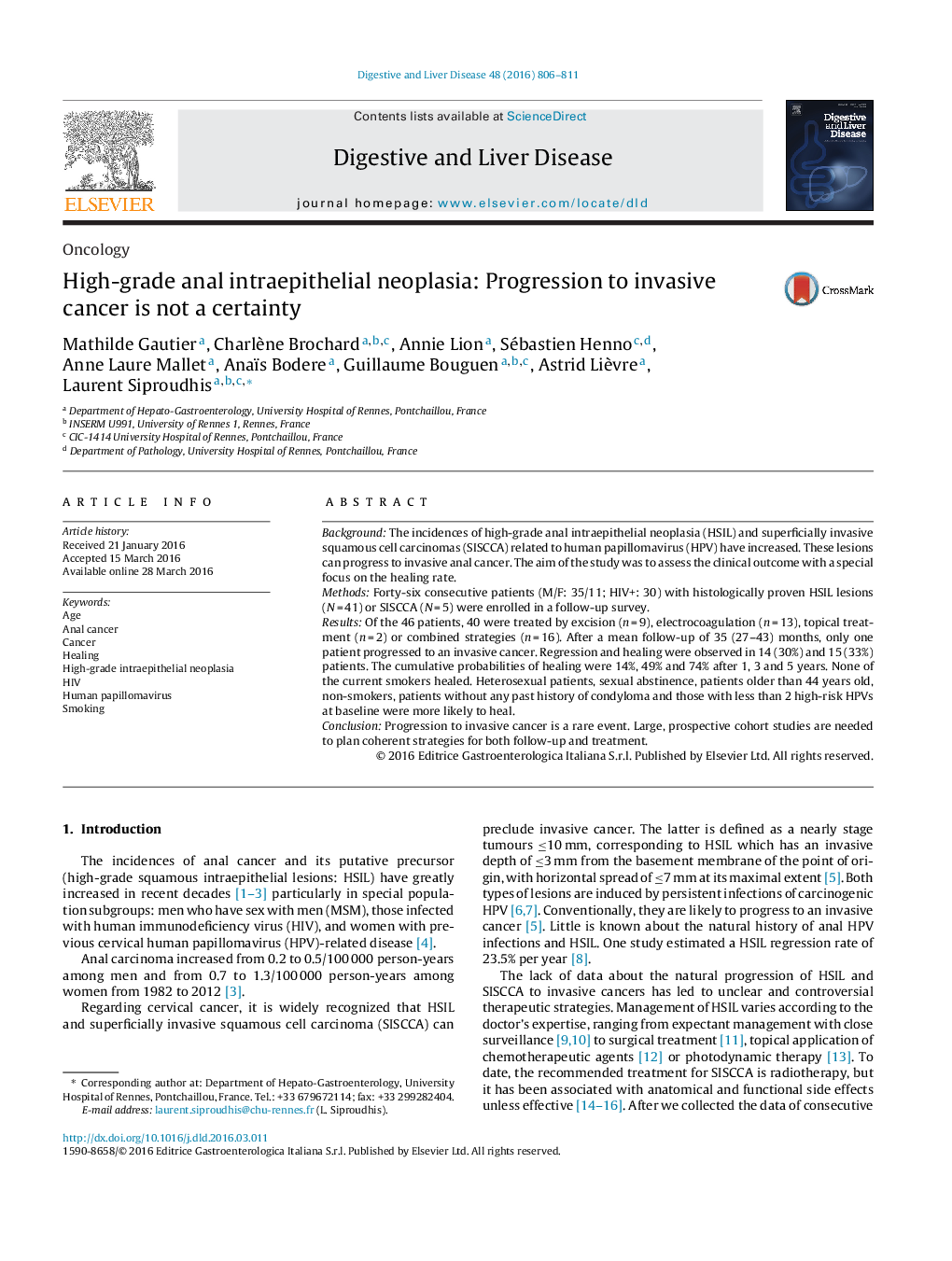| Article ID | Journal | Published Year | Pages | File Type |
|---|---|---|---|---|
| 3261222 | Digestive and Liver Disease | 2016 | 6 Pages |
BackgroundThe incidences of high-grade anal intraepithelial neoplasia (HSIL) and superficially invasive squamous cell carcinomas (SISCCA) related to human papillomavirus (HPV) have increased. These lesions can progress to invasive anal cancer. The aim of the study was to assess the clinical outcome with a special focus on the healing rate.MethodsForty-six consecutive patients (M/F: 35/11; HIV+: 30) with histologically proven HSIL lesions (N = 41) or SISCCA (N = 5) were enrolled in a follow-up survey.ResultsOf the 46 patients, 40 were treated by excision (n = 9), electrocoagulation (n = 13), topical treatment (n = 2) or combined strategies (n = 16). After a mean follow-up of 35 (27–43) months, only one patient progressed to an invasive cancer. Regression and healing were observed in 14 (30%) and 15 (33%) patients. The cumulative probabilities of healing were 14%, 49% and 74% after 1, 3 and 5 years. None of the current smokers healed. Heterosexual patients, sexual abstinence, patients older than 44 years old, non-smokers, patients without any past history of condyloma and those with less than 2 high-risk HPVs at baseline were more likely to heal.ConclusionProgression to invasive cancer is a rare event. Large, prospective cohort studies are needed to plan coherent strategies for both follow-up and treatment.
